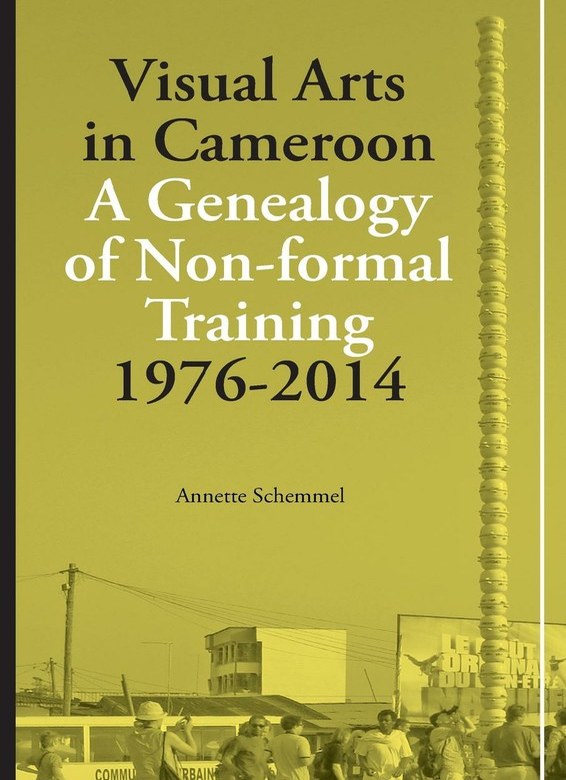written by Annette Schemmel
A Genealogy of Non-formal Training 1976-2014
Annette Schemmel provides a highly illuminating case study of the major actors, discourses and paradigm that shaped the history of visual arts in Cameroon during the second part of the 20th century. Her book meticulously reconstructs the multiple ways of artistic knowledge acquisition – from the consolidation of the “Système de Grands Frères” in the 1970s to the emergence of more discursively oriented small artists’ initiatives which responded to the growing NGO market of social practice art opportunities in the 2000s. Based on archival research, participant observation and in depth interviews with art practitioners in Douala and Yaoundé, this study is a must read for everyone who wants to better understand the vibrant artistic scenes in countries like Cameroon, which until today lack a proper state-funded infrastructure in the arts.
| ISBN | 9789956763603 |
| Pages | 408 |
| Dimensions | 234 x 156mm |
| Illustrations | Colour Illustrations and Colour Photographs |
| Published | 2016 |
| Publisher | Langaa RPCIG, Cameroon |
| Format | Paperback |





3 comments
“Le Cameroun c’est le Cameroun” is a famous formula invented by President Paul Biya to articulate a presumed pathological matrix in which the country has been caught throughout the postcolonial era. is proverb falsely suggests that Cameroon
is only speakable through Cameroon – an exceptionalist discourse frequently used by dictatorial regimes across the world. rough this careful and timely study, Annette Schemmel reconnects the country’s own visual arts history to trends, discourses and inherent blind spots in the global art system from the second half of the 20th century onward. On her way, the author also slays the myth-monument of the “Autodidact African Artist”
Ntone Edjabe, Founder and Editor, Chimurenga
“Annette Schemmel provides a highly illuminating case study of the major actors, discourses and paradigms that shaped the history of visual arts in Cameroon during the second part of the 20th century. Her book meticulously reconstructs the multiple ways of artistic knowledge acquisition – from the consolidation of the “Système de Grands Frères” in the 1970s to the emergence of more discursively oriented small artists’ initiatives which responded to the growing NGO market of social practice art opportunities in the 2000s. Based on archival research, participant observation and in depth interviews with art practitioners in Douala and Yaoundé, this study is a must read for everyone who wants to better understand the vibrant artistic scenes in countries like Cameroon, which until today lack a proper state-funded infrastructure in the arts.”
Tobias Wendl, Chair for the Arts of Africa, Free University Berlin
“Finally a book on informal training, a phenomenon that has proven to be so important to 20th century visual art in Cameroon!”
Paul-Henri S. Assako Assako, Head of the Art History and Fine Art Section, University of Yaoundé I